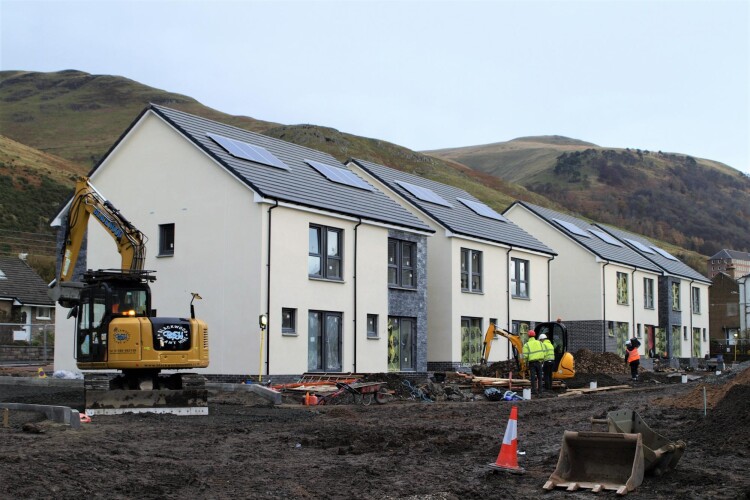The project could pave the way for increased economic development in parts of the Highlands and Islands, while mitigating disruption to the natural ecosystem and the captured carbon dioxide.
The team will explore number of construction methods that allow the peat to be left in place, such as deep-soil-mixing and piling.
The research consortium involves Edinburgh Napier University and Heriot-Watt University, with support from the Highland Council, Highlands & Islands Enterprise (HIE), Construction Scotland Innovation Centre (CSIC) and Jahama Highland Estates. The Scottish Environment Protection Agency (SEPA), NatureScot, EcoSystems Tech and the Scottish Government are also supporting the initiative.
Peatland comprises dead and decaying plant material, with carbon captured in the remains. As much as 20% of Scottish land is covered in peat soil, serving as a store for more than 1.7 billion tonnes of carbon - equivalent to 140 years’ worth of Scotland’s total annual greenhouse gas emissions. However, the soil is often unsuitable for building upon because of low strength, landslide risks and its tendency to deform under load.
In parts of the Highlands & Islands, where peatland is commonly found, new housing is in short supply and some sites earmarked for housing development can be complicated by the presence of peat, said CSIC. Finding viable, sustainable methods for building on peatland that align with restoration work already under way could transform Scotland’s approach to rural housing it added; good quality, affordable homes could help to reverse population decline and promote economic growth in rural areas.
Construction teams have previously relied on excavate-and-replace techniques. However, this project will explore a number of options such as deep-soil-mixing and piling that allow the peat - and stored carbon - to be left in place. Timber piling would use tree trunks or long poles of timber for the foundations. Disturbance of the peatland would be minimised, especially the presence groundwater, which is essential if peat is to continue to accumulate, said CSIC.

The aim of the first phase of the project is to assess and compare the geotechnical suitability, environmental impact, logistics and cost implications of the different approaches. In a second phase, live field trials are planned to assess the suitability of proposed solutions.
Dr John McDougall of Edinburgh Napier University said: “Peatland has long posed a challenge to construction, the solution to which has commonly been an aggressive practice of removal. More recently, planners, environmental agencies and engineers have become increasingly aware of the very significant role of intact peat in the carbon cycle. In this context, it is exciting to be leading a re-evaluation of foundation options in the context of geotechnical, environmental and economic factors.”
Councillor Trish Robertson, chair of the economy and infrastructure committee at Highland Council, said: “Highland Council is happy to support this research project as a way of exploring innovative ways of achieving our objectives of delivering more affordable housing and inclusive economic growth, while safeguarding better croft and other agricultural land, and reducing the carbon emissions presently caused by development on poorer agricultural land, which often contains significant peat deposits. I am hopeful that the results of the research can have a practical application for future developments and help us even better achieve our objectives.”
Julia Stoddart, chief operating officer at Jahama Highland Estates, said: “Preserving and restoring peatland to keep carbon sequestered and enhance biodiversity is central to the land management work happening right now across Jahama Highland Estates. With over 14,000ha of peatland on the estate, restoration work forms a significant part of our parent organisation GFG Alliance’s efforts to offset the carbon footprint of its industrial operations as it progresses towards carbon neutrality by 2030.”
Scott Dingwall, head of regional development, Lochaber, Skye and Wester Ross, at Highlands and Islands Enterprise, said: “The availability of suitable affordable housing is a key factor in regional development across the Highlands and Islands. It is needed to attract and retain young people as well as inward investors looking to locate in the region. This innovative project has the potential to make it feasible to develop housing on areas where it previously would not have been considered. This could benefit rural economies and strengthen local communities, while protecting some of the region’s outstanding natural features. As such, it could be a key element in our shift towards a carbon neutral economy and achieving our net-zero targets. We are very pleased to be able to provide support and look forward to seeing the project progress.”
Andrew Nurse, project manager at CSIC, said: “In line with Scotland’s goals for net-zero, especially in the construction sector, we are looking at more sustainable options such as timber piles, as a solution for building on peatland - which could also make use of local, home-grown materials. Once we have reached conclusions from the feasibility study, the next stage will be to conduct a series of on-site trials at various locations in the Highlands and Islands.”
Got a story? Email news@theconstructionindex.co.uk



